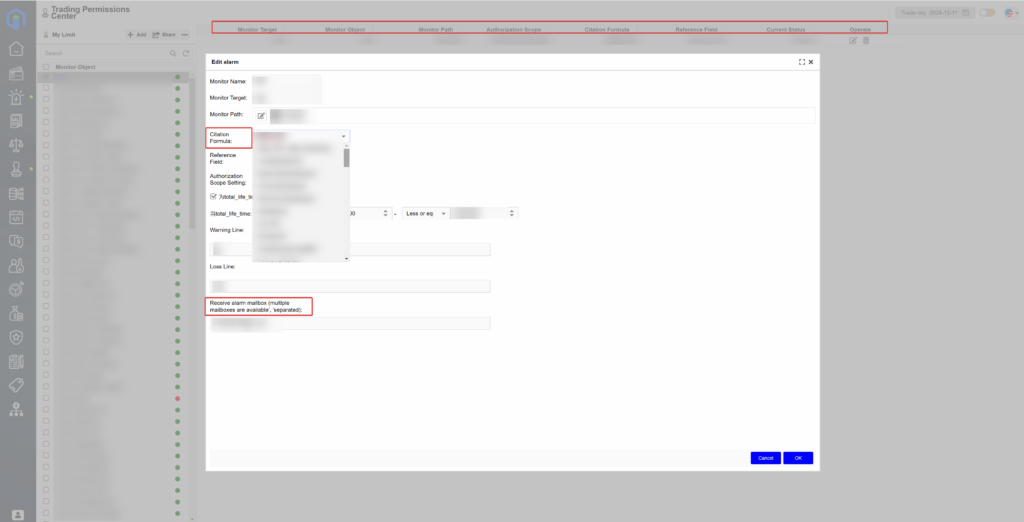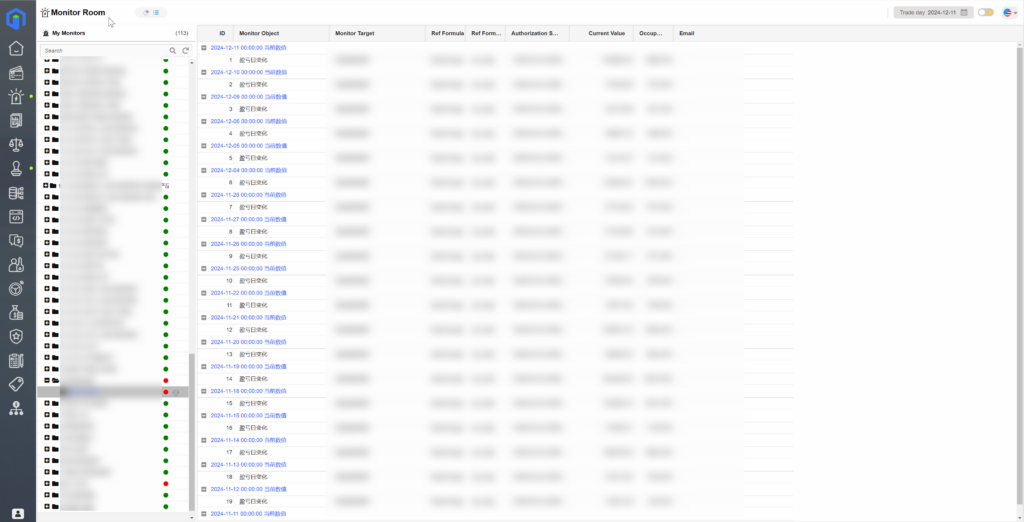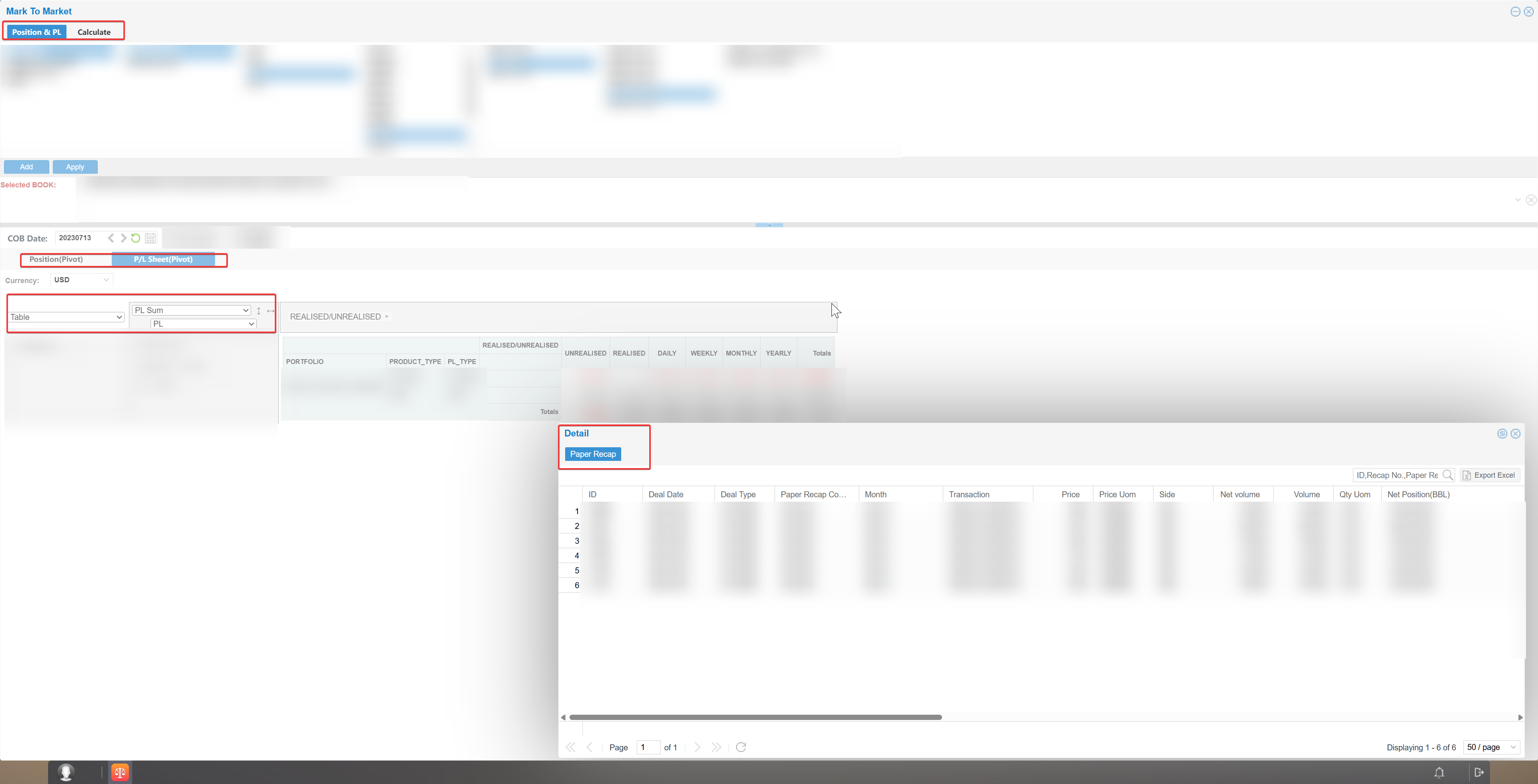In commodity trading enterprises, risk management is facing increasingly complex challenges. As an innovative tool focused on data governance and mining, X-Ray provides powerful risk control and data management capabilities, enabling businesses to maintain stable operations amid market volatility.
Among its offerings, X-Ray‘s X-Eagle module specializes in real-time monitoring and alerting, currently applied primarily in market risk management. By dynamically capturing market changes, it enables multi-dimensional real-time risk alerts.
However, as X-Ray’s data governance capabilities continue to expand, the application potential of X-Eagle will also broaden. Beyond market risks, it is expected to support monitoring in areas like credit risk and liquidity risk in the future, building a more comprehensive risk alert system.
This expansion not only reflects the evolving needs of enterprise data governance but also highlights the vast application potential of X-Ray in commodity trading risk management.
Moreover, as X-Ray extends into more industries’ data governance scenarios, X-Eagle may eventually meet the monitoring and alerting needs of diverse industries.
For now, let us focus on X-Ray’s practical domain—the commodity trading industry—to illustrate the core functions and practical value of the X-Eagle module.
1. Core Functions and Practical Value of the X-Eagle Alert System
To perform multi-dimensional and hierarchical risk control, commodity trading enterprises design diverse risk limits and alerts, such as position loss thresholds. When a loss exceeds the limit, an alert is triggered, notifying decision-makers to take measures like reducing positions or hedging. This helps prevent further losses and ensures financial health.
To meet the multi-dimensional risk limit and alert needs of commodity trading enterprises, the X-Eagle module offers the following core features:
- Multi-Dimensional Risk Indicator Monitoring: The system generates flexible formulas based on various risk indicators. These formulas enable real-time monitoring of position limits, market volatility, liquidity, and other multi-dimensional risks.
- Customizable Monitoring Settings: X-Eagle allows users to define monitoring targets, objects, paths, authorization scopes, formulas, and alert emails, greatly enhancing system flexibility to adapt to changing business needs.
- Automated Risk Alert Mechanism: Upon triggering risk events, the system sends real-time alerts via emails or system notifications, helping enterprises promptly respond to and manage risks.
- Real-Time Data Monitoring and Analysis: With seamless integration of external market and internal enterprise data, the system ensures real-time updates, reducing manual intervention and improving the accuracy and timeliness of alerts.

Below, we use the practical case of Company Z to demonstrate the core functions and value of the X-Eagle alert system.
Case Study: Practical Application of X-Eagle in Company Z
Company Z, a large oil trading enterprise, primarily engages in international trade of crude oil, refined oil, natural gas, and chemical products. It operates globally and has established stable, long-term partnerships with national oil companies, earning a strong reputation in the international energy market.
With substantial business and data volumes, the company frequently requires accurate and timely risk alerts to manage market risks in oil trading effectively.
Before adopting X-Eagle, Company Z relied primarily on Excel and manual processes for market risk monitoring and alerting. This approach was inadequate for handling large-scale monitoring demands and prone to errors and delays.
By implementing X-Ray for risk data governance and upgrading to X-Eagle for alerting, Company Z achieved the following outcomes:
- Real-Time Monitoring: Based on predefined market risk indicators, the system conducts real-time monitoring and automatic calculations, enabling Company Z to quickly detect potential risks.
- Automated Alerts: When risk indicators breach preset limits, X-Eagle automatically triggers alerts through emails and system notifications, prompting relevant personnel to take action and mitigate exposure.
- Dynamic Monitoring Adjustments: X-Eagle allows Company Z to adjust risk indicators, limits, and monitored objects promptly in response to market changes or strategic shifts, ensuring effective risk control amid market volatility.
- Cross-Department Collaboration: The alert system enhances transparency in risk data, facilitating close collaboration between the trading, risk management, and compliance departments to respond swiftly to risk events and safeguard overall business operations.

Through these applications, Company Z significantly improved its risk data management efficiency and reduced financial losses due to delayed market risk monitoring.
For instance, during a market fluctuation, X-Eagle successfully alerted Company Z to an over-limit risk in one of its trades. The timely warning enabled the company to implement appropriate strategies, avoiding potential losses of billions. In just a few months, X-Eagle detected over 50 potential risk events, helping Company Z avert several major risk incidents.
From this case, we can see the core functions and practical value of X-Eagle, and how its efficiency surpasses that of Excel and manual methods. But how does X-Eagle compare to Excel or even BI tools in risk alerting? Let’s explore further.
2. Comparison of Risk Alerting Advantages: X-Eagle, Excel, and BI Tools
In risk alerting scenarios, X-Eagle offers the following advantages over Excel and BI tools:
1、Data Governance, Alert Accuracy, and Automation
X-Eagle: With X-Ray’s professional data governance capabilities, X-Eagle supports full-process data management, from collection to processing. Its non-intrusive approach continuously gathers large-scale internal and external data, constructing high-quality risk models for accurate and consistent data. This ensures precise, automated multi-dimensional risk monitoring and alerts with minimal manual intervention.
Excel: Suitable for small-scale, low-complexity data with manual input and processing. However, its data governance capabilities are limited, and it struggles with accuracy and real-time data. It is better suited for simple threshold alerts rather than complex multi-dimensional monitoring.
BI Tools: While offering some data integration and automation capabilities, BI tools lack comprehensive data governance. They perform moderately well in automation but may struggle in scenarios requiring complex data governance and high alert accuracy.
2、Real-Time Monitoring and Alert Response
X-Eagle: Supports real-time data monitoring, seamlessly integrating with external market data and internal systems. It offers high-frequency updates and quick responses, ideal for large enterprises’ complex risk monitoring needs.
Excel: Lacks real-time capabilities, relying on manual input or refresh for updates, which are insufficient for frequent risk monitoring.
BI Tools: Offers real-time data connections and automatic alerts to some extent but lacks the high frequency and precision required for volatile risk scenarios.

3、Customizable Monitoring and Flexibility
X-Eagle: Provides highly customizable settings, enabling businesses to adjust monitoring targets, formulas, and authorization scopes freely. This flexibility suits complex and dynamic risk environments.
Excel: Limited flexibility; while simple alert formulas can be set, it is not suitable for real-time, automated, or multi-dimensional risk monitoring.
BI Tools: Offers basic customization but lacks the flexibility needed for complex multi-dimensional or cross-department monitoring.
In summary, X-Eagle outperforms Excel and BI tools in risk alerting. It leverages X-Ray’s robust data governance and automation capabilities to handle large-scale, multi-dimensional risk data efficiently, ensuring precise real-time monitoring and alerts. This makes it an ideal choice for enterprises requiring high-frequency, efficient, and flexible risk management.
Conclusion
From Company Z’s application of X-Eagle, we see its significant advantages in real-time monitoring and risk alerts. Compared to manual Excel methods or BI tools, X-Eagle offers superior real-time capabilities, flexibility, and automation, streamlining complex risk management tasks and improving decision-making speed and accuracy.
While Excel and BI tools suffice for basic risk data handling, they fall short in multi-dimensional risk analysis. X-Eagle ensures enterprises can quickly identify and respond to potential risks amid market fluctuations, avoiding further losses.
For enterprises aiming to enhance risk control and ensure swift responses, X-Eagle is an ideal solution. Its efficient risk management reduces human error and helps businesses maintain a competitive edge in volatile markets. Contact us today to learn how X-Eagle can be integrated into your enterprise and start your journey toward precise and efficient risk management!





